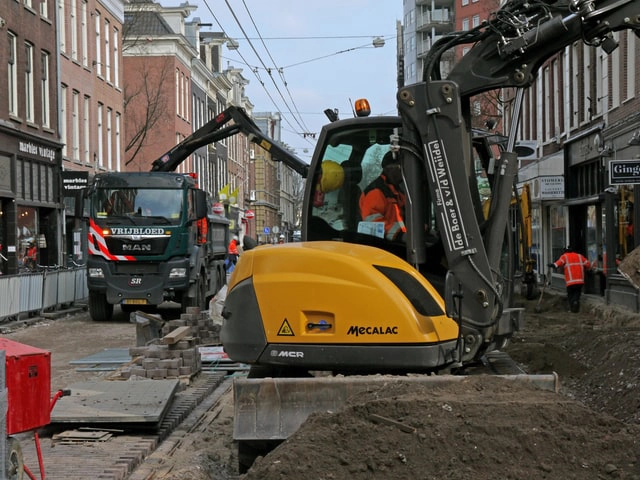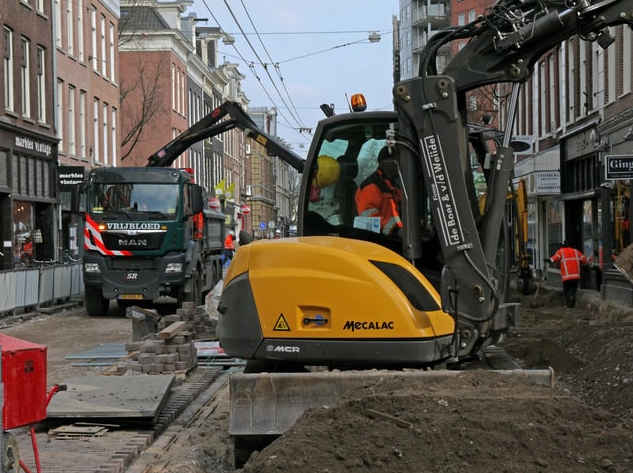In this new blog, we discuss the trend of Hydrogen (H2) within the energy transition. What do you need to know as a service provider within the energy market when looking for gas detection? What effect does Hydrogen have on your current sensors or detection?
As a service provider in the energy market, you made a well-considered choice years ago for gas detection and the associated technology. Well, this is still the right choice and safety will be guaranteed in the future, looking at the changing energy market. Hydrogen stations are springing up like mushrooms.
The energy transition in the Netherlands continues tirelessly. Wind farms are already producing coal from the ground (or sea) and dikes are full of solar panels. But this transition is also taking place in the gas market. Many suppliers have indicated that they are looking for alternatives to natural gas, one of which is Hydrogen. However, there is yet no national distribution network for 100% Hydrogen, and the mixing of H2 and Natural Gas is becoming more and more common. All this is, of course, to reduce CO2 emissions in combustion appliances. As far as we are concerned, this is a good development. This blog continues below the picture.

Sensors and Hydrogen
Years ago, choices were made within the energy industry for a catalytic LEL sensor or an infrared LEL sensor. Look at this article to find out more about the differences between these sensor principles. But is the LEL sensor the only one that needs thinking about? Do other sensors also respond to Hydrogen or not? For a long time, this subject was not very important because Hydrogen was not. However, with the recent developments in the energy sector, we have done some research into this.
That the CO (Carbon Monoxide) sensor is cross-sensitive to Hydrogen is widely known, but that Hydrogen also affects the O2 (Oxygen) sensor is less known. Now, just like with the LEL sensor, this depends on which technique is used in the gas detector. A so-called liquid Oxygen sensor will react very fiercely to the presence of Hydrogen and may even go into alarm. At a value of 1% vol H2, the sensor reacts with 2-3% vol Oxygen in the display. The Oxygen value in the display will therefore drop by 2-3% vol O2 without any immediate danger being present. Because the alarm will go off frequently, one will lose confidence in the detector and react less adequately to real dangers. With all its consequences. The liquid Oxygen sensor is often sold as a long-life sensor. It is not known whether the presence of Hydrogen affects the life span of the cell. However, such a violent reaction is probably not without consequences for the long term. We are still investigating this.
You also have the electrochemical Oxygen sensor which has an average lifespan of 2 years. However, these sensors do not react to the presence of Hydrogen. These electrochemical sensors can for example be found in the QGM-Cat of WatchGas and the Ventis PRO5 of Industrial Scientific. The Ventis PRO 5 can also be equipped with a Hydrogen compensated CO sensor. This eliminates any form of problem in the detection of Hydrogen. If you are looking for prices and advice on these devices, please contact us. Beneath these pictures the text continues.
Both devices are extremely suitable for any Hydrogen application. Please note that a gas detection device with (IR) infrared LEL sensor does not react to Hydrogen. Working with Hydrogen brings new challenges not only to the energy market and installers but to all sectors and industries associated with it. With our knowledge and skills of all brands of gas detection and the different types of gas, we can think along with our customers. This enables us to ensure that our employees can carry out their tasks safely.
If there are any questions about the risks of Hydrogen and how you can protect yourself against them with fixed or portable gas detection, we will be happy to help you out. We have a solution and brand for every application. Please contact us via 010 27 999 91 or live chat.
Questions regarding our blog? Get in touch:
CALIBRATE IN GAS DETECTION: The 7 * KEY * facts about the sense (and nonsense) of calibration [Gas meter]
Choices to be made in Gas Detection.
Contaminated instruments need service too


